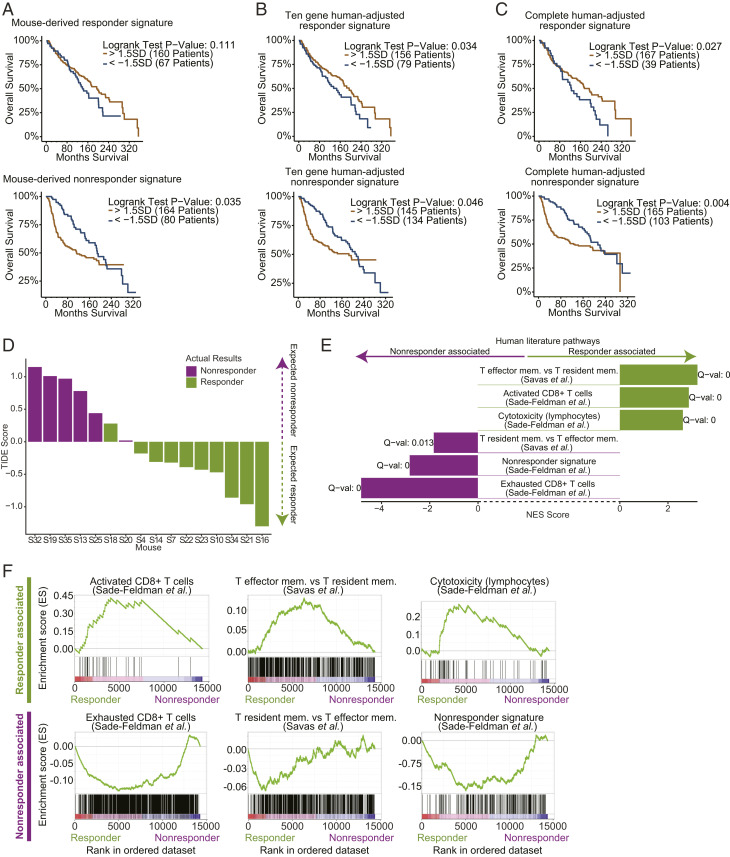Fig. 5.
Mouse-derived early therapeutic stage responder/nonresponder gene signatures are predictive of patient survival and response to ICB. (A–C) An analysis of association of BC patient survival (METABRIC database) with high or low scores for each of the responder and nonresponder signatures (Materials and Methods). (A) Partitioning BC patients by their high (gold) or low (blue) expression of the mouse-derived responder signature (Top) and nonresponder signature (Bottom). Patients with high values of the responder signature show a trend toward better survival (Top). Patients with high values of the nonresponder signature are significantly associated with worse survival (Bottom). (B and C) Following the adjustment of the mouse-derived early therapeutic stage signatures to the human BC landscape (Materials and Methods), when partitioning BC patients there is a significant association of survival with expression of the responder signature (P = 0.034 for 10-gene signature [B, Top] and P = 0.027 for complete signature [C, Top]) and a significant association of worse survival with expression of the nonresponder signature (P = 0.046 for 10-gene signature [B, Bottom] and P = 0.004 for complete signature [C, Bottom]). (D) An analysis of the mouse-derived transcriptional profiles with TIDE correctly predicts which of the mice in our cohort responded to treatment. (E) Our mouse-derived early therapeutic stage responder and nonresponder signatures shows significant association with T cell signatures annotated from patient data (enrichment analysis performed by GSEA PreRanked tests). (F) Enrichment plots as output from GSEA for select pathways from E.

